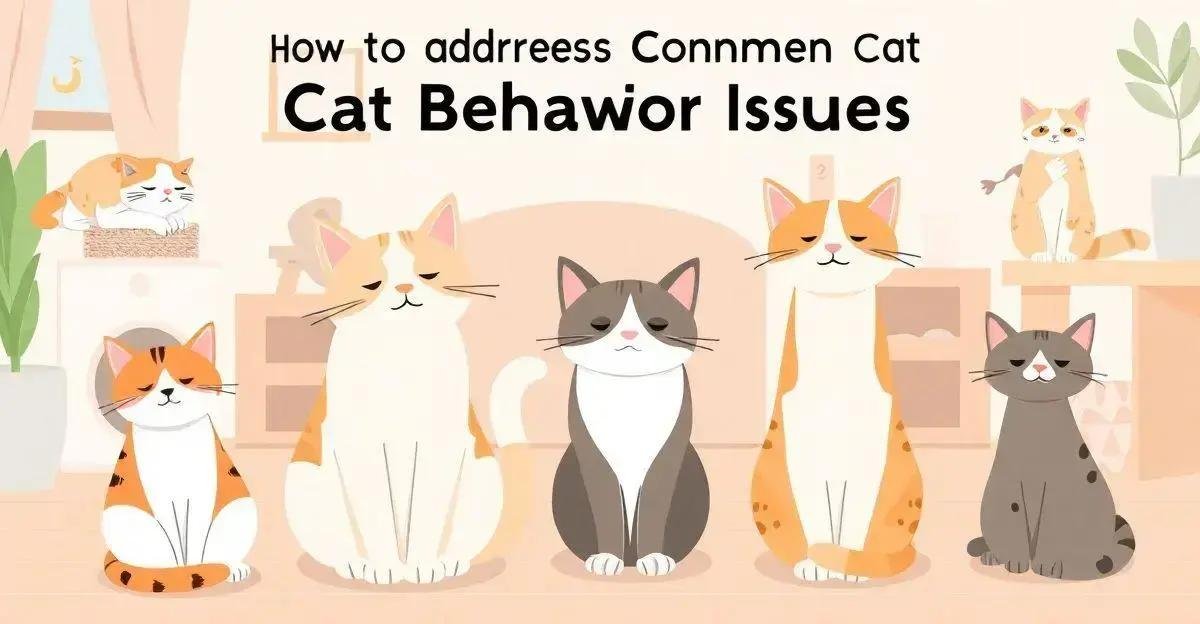Are you tired of dealing with unwanted scratching, hissing, or hiding? If so, you’re not alone. Many cat owners struggle with cat behavior issues, but the good news is that they can be addressed.
By understanding what drives your cat’s behavior and implementing simple changes, you can create a more harmonious home for both you and your feline friend.
In this article, we’ll explore the most common cat behavior issues and provide expert tips on how to overcome them.
Common Cat Behavior Issues You Should Know About
Cat behavior issues can be frustrating and confusing, but understanding what’s normal and what’s not can help you address the problem.
Common issues include scratching furniture, peeing outside the litter box, and not using the litter box at all. These behaviors are often caused by boredom, medical issues, or stress.
By identifying the underlying cause, you can take steps to address it and prevent the behavior from continuing.
Understanding Feline Body Language

Feline body language is a vital tool for understanding your cat’s behavior and emotions. Cats communicate primarily through body language, using postures, facial expressions, and vocalizations to convey their mood and intentions.
Ear positioning is a key indicator of a cat’s emotions, with ears forward indicating confidence and ears back indicating fear or submission.
Tail swish
A tail swish can signal irritation or agitation, while a slow, sweeping motion can indicate contentment. By paying attention to these subtle cues, you can build a stronger bond with your cat and better address their behavioral needs.
Identifying and Addressing Behavioral Problems
Identifying and addressing behavioral problems in cats requires a thorough understanding of their behavior and a patient approach.
The first step is to observe your cat’s behavior, taking note of any patterns or triggers that may be contributing to the problem.
Next, you’ll need to
rule out medical issues
, as some behavioral problems can be caused by underlying medical conditions.
Once you’ve identified the source of the problem, you can begin to implement changes to address it.
This may involve modifying your cat’s environment, providing more exercise and stimulation, or addressing any underlying stress or anxiety.
With patience and persistence, you can help your cat overcome behavioral problems and live a happier, healthier life.
Household Solutions for Cat Behavior Issues

Household solutions for cat behavior issues often involve making simple changes to your cat’s environment. For example, you can try redirecting scratching behavior by providing alternative surfaces for your cat to scratch, such as a scratching post.
You can also try
increasing vertical space
by adding cat shelves or climbing structures to give your cat more room to roam.
Additionally, you can try reducing stress and anxiety by creating a calm and peaceful environment, such as by playing soothing music or using a diffuser with calming essential oils.
By making these simple changes, you can help your cat feel more comfortable and reduce the occurrence of behavior issues.
Creating a Cat-Friendly Environment
Creating a cat-friendly environment is crucial for reducing cat behavior issues. This can be achieved by providing a comfortable and stimulating space for your cat to live and play.
Vertical space is essential, as cats love to climb and perch. You can achieve this by adding cat shelves, cat towers, or even a cat tree. Additionally, provide a variety of textures and surfaces for your cat to scratch and rub against, such as sisal rope or corrugated cardboard.
Minimize clutter
by keeping your home tidy and organized, as cats can become stressed by cluttered environments. Finally, provide plenty of hiding spots and places for your cat to feel secure, such as cardboard boxes or tunnels. By creating a cat-friendly environment, you can help reduce your cat’s stress levels and alleviate behavior issues.
Conclusion: Cat Behavior Issues and How to Overcome Them

By understanding and addressing cat behavior issues, you can build a stronger bond with your feline companion and create a more harmonious home.
By recognizing the common issues, understanding feline body language, identifying and addressing behavioral problems, and creating a cat-friendly environment, you can help your cat feel comfortable, secure, and happy.
Remember to be patient and persistent, as overcoming behavior issues takes time and effort.
With the right approach and a little creativity, you can help your cat thrive and enjoy a lifelong friendship with your furry companion.
FAQ – Frequently Asked Questions about Cat Behavior Issues
What are the most common cat behavior issues?
Scratching furniture, peeing outside the litter box, and not using the litter box at all are some of the most common cat behavior issues.
How can I understand my cat’s body language?
By paying attention to your cat’s posture, facial expressions, and vocalizations, you can better understand their emotions and intentions.
What are some household solutions for cat behavior issues?
Providing alternative surfaces for scratching, increasing vertical space, and minimizing clutter can help alleviate cat behavior issues.
How can I create a cat-friendly environment?
By providing a comfortable and stimulating space with vertical space, textures, and hiding spots, you can create a cat-friendly environment.
Why is it important to address cat behavior issues?
Addressing cat behavior issues can help reduce stress, anxiety, and frustration for both you and your cat, leading to a more harmonious home.
What are some tips for overcoming cat behavior issues?
Patience, persistence, and understanding your cat’s behavior and body language are key to overcoming cat behavior issues.




